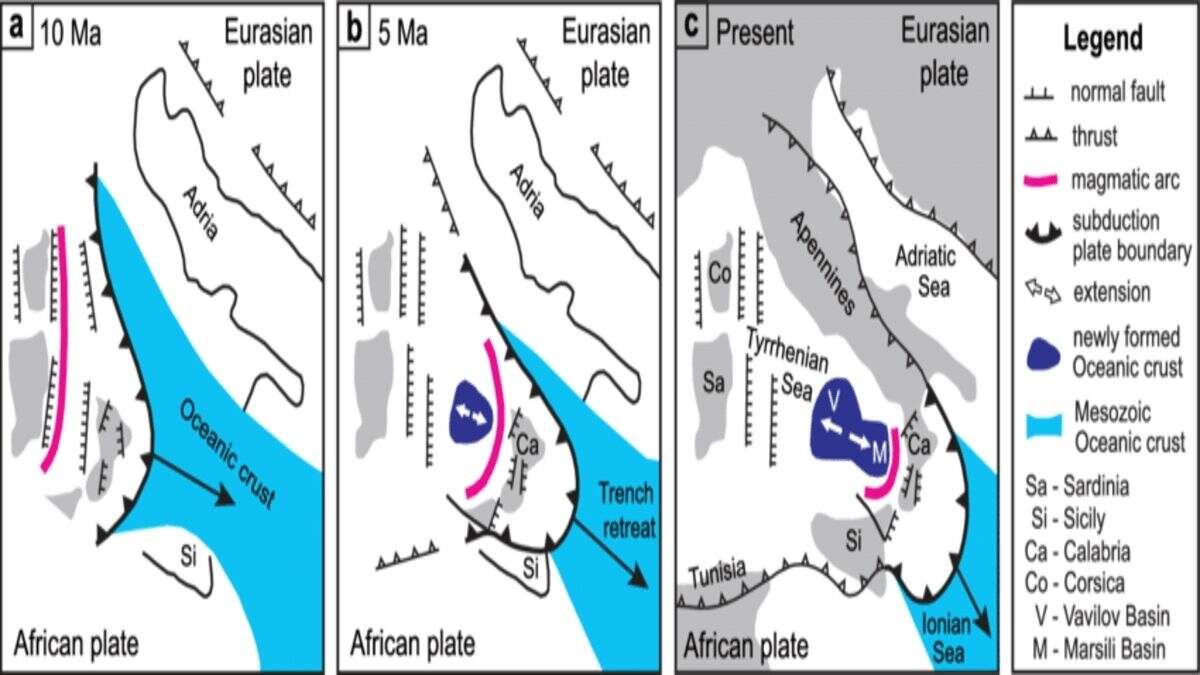Mountains have long captivated the curiosity of scientists due to their fundamental role in shaping the Earth's surface. However, a groundbreaking study led by Colorado State University has revealed that the processes underlying mountain formation are far more complex than previously believed.
Titled "Calabrian forearc uplift paced by slab-mantle interactions during subduction retreat," the research focuses on subduction zones, particularly in southern Italy, and suggests that the descent of a tectonic plate through Earth's mantle and its influence on mantle flow play a significant role in mountain formation, also known as Orogeny.
This finding challenges the conventional understanding of crust crumpling and thickening as the primary drivers of mountain-building processes, offering a more nuanced perspective on the subject.

Lead author Sean Gallen, an assistant professor of geosciences at CSU, and his team reconstructed the extensive history of mountain building in southern Italy using innovative data sets and methodologies. Their approach involved leveraging the geological characteristics of the region's landscapes as a means to unravel the complex processes at play.
One tectonic plate dives beneath another in subduction zones like Calabria, southern Italy, generating mountains through the crumpling and thickening of the Earth's crust
By combining measurements encompassing both short and long geological timescales, ranging from thousands to tens of millions of years, the team effectively used the landscape as a "geologic tape recorder" to reconstruct the tectonic history.
Surprising Findings and Implications
The researchers encountered unexpected results, which Gallen described as "confounding." Traditionally, scientists anticipated a correlation between the rate at which a plate descends beneath another over time and the corresponding rock uplift history.
However, the study's findings challenge this assumption. Instead, the team discovered that the primary factor controlling rock uplift in the Calabrian mountains is the descent of the lower plate through Earth's mantle and its influence on the mantle's flow field
“We would expect to see a correlation between the rate at which the plate is diving down beneath the other plate through time and our rock uplift history, and we don’t see that,” Gallen said.

Gallen emphasized the significance of these results, noting that they deviate from the conventional understanding of mountain building. While theoretical models have suggested the influence of deeper Earth processes, this study provides the first empirical evidence of such mechanisms at work in nature. However, Gallen acknowledged that further data is necessary to validate their interpretation, even though it is supported by existing numerical models.
“The records we have produced imply that deep earth signals appear to dominate what’s happening at the surface, I’ve been working in the Mediterranean for 15 years, and this result has profoundly changed the way I think about these subduction zones.”
Revolutionizing Techniques for Understanding Mountain Formation
A notable aspect of this study lies in the new techniques developed to construct long-term rock uplift histories. The research team formulated a unified framework by integrating various standard geomorphology measurements, including thermochronology, cosmogenic nuclides, bedrock river profiles, and the analysis of past sea levels observed in marine terraces. This multifaceted approach enabled them to extend their investigations further back in geological time and provided unique constraints for their modeling efforts.
The developed software, which underpins the study and has been published in Nature Geoscience, is readily accessible to other researchers. Gallen hopes that these innovative techniques will stimulate further investigations and lead to new discoveries in other geographical areas.
These findings have the potential to revolutionize our understanding of mountain-building processes in subduction zones, providing a more comprehensive and nuanced perspective on the complex dynamics shaping our planet's surface. Furthermore, the breakthrough techniques developed by the team pave the way for future investigations and advancements in the field of geoscience.
Comments
All Comments (0)
Join the conversation